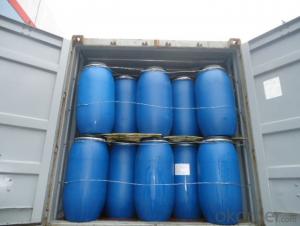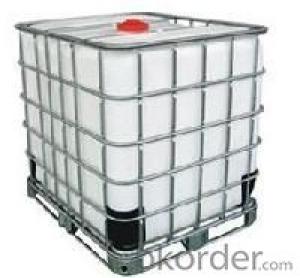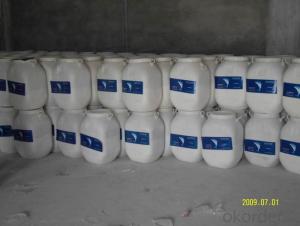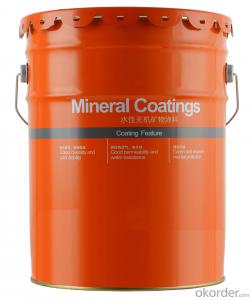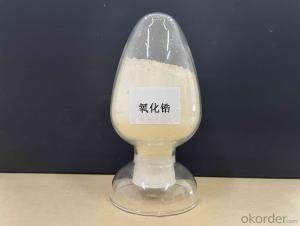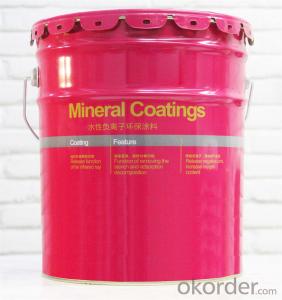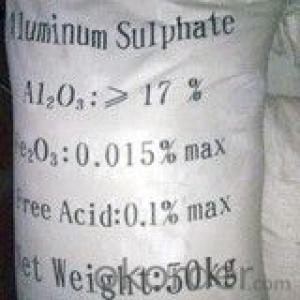Seawater Chlorinator System/sodium hypochlorite producing system
- Loading Port:
- Tianjin
- Payment Terms:
- TT OR LC
- Min Order Qty:
- 25 m.t.
- Supply Capability:
- 6000 m.t./month
OKorder Service Pledge
OKorder Financial Service
You Might Also Like
Sodium Hypochlorite
CAS NO: 7681-52-9
Chemical Formula: NaClO
Molecular Weight: 74.44
Appearance: Yellow transparent Liquid
Standard: HG/T2498-1993
Specification:
Available Chlorine: 8%-16%
NaOH: 1% Max
Transportation Info:
Class: 8 UN NO: 1791 PG:III
Application:
Disinfection for swimming pool, drinking water, cooling tower and sewage and waste water, food, and farming, hospital, school, station and household etc
Good bleaching and oxidation in paper and dye industry.
Normal Packing: 30kg drum, 1200kg IBC Tank
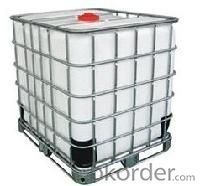
Solid Sodium Hypochlorit
1) Solid Sodium Hypochlorit is white or light yellow green, crystalline, alkaline, lightly absorptve humidity and easily solvable in water and alcohol.
2) Solid Sodium Hypochlorit is an oxidizng agent with high efficiency and an excellent bleaching ingredent, its afficiency is aqual to 10 times of bleaching powder.
3) Solid Sodium Hypochlorit is stable when stored under room tenperature or normal condition, its stability is bigger than sodiun hypochlorite and smaller than sodium chlorate.
4) When mixed solid sodium chlorite and alkaline solution are heated over 70 centigrade, it resoves chlorine hydrogen.
5) Solid Sodium Hypochlorit is easily explosive, buring or poisinous when met, , bumped or rubbed with wooden bits, organic substance and reeductive substance.
- Q:Effect of Catalyst on Chemical Reaction Rate
- The catalyst can reduce the activation energy of the chemical reaction and allow the reaction to take a shortcut
- Q:Why the amount of catalyst is too small will make the chemical reaction rate slowed down
- Can significantly change the reaction rate and its own chemical properties and quantity in the reaction before and after the basic material unchanged. The catalyst has a positive catalyst (i.e., accelerates the reaction rate) and a negative catalyst (i.e., reduces the reaction rate), and generally does not specifically refer to both the positive catalyst.
- Q:What is the PTC catalyst in chemistry?
- 1, polyether chain polyethylene glycol: H (OCH2CH2) nOH chain polyethylene glycol dialkyl ether: R (OCH2CH2) nOR2, cyclic crown ethers: 18 crown 6,15 crown 5, Fine and so on. 3, quaternary ammonium salt: commonly used quaternary ammonium salt phase transfer catalyst is benzyl triethyl ammonium chloride (TEBA), tetrabutyl ammonium bromide, tetrabutylammonium chloride, tetrabutylammonium hydrogen sulfate (TBAB) , Trioctylmethylammonium chloride, dodecyltrimethylammonium chloride, tetradecyltrimethylammonium chloride, and the like. 4, tertiary amine: R4N X, pyridine, tributylamine and the like. 5, quaternary ammonium base (its alkaline and sodium hydroxide similar) soluble in water, strong hygroscopicity. 6, quaternary phosphonium
- Q:okay im doing a project for my classroom about catalyst and i have to draw a picture but when i looked up on google i just saw a bunch of random stuff and a couple were metal so thats why im asking this question. :)
- a okorder /...
- Q:I have just spent CAN$550 to replace a catalyst converter at one end of the muffler. The repairman said I need to replace the oxygen sensor very soon, otherwise, the C.C. will be gone again. Is that true... can someone confirm this for me. Thanks.
- With a four cylinder engine, the code definition should have read: B1S1 (for the upstream sensor responsible for fuel/air ratio monitoring) or B1S2 (for the sensor downstream of the catalytic converter, which only monitors that part). If you changed the front (S1) sensor and you still have a code for it, save your old sensor as there may be nothing wrong with it. If the code is for the O2 sensor heater, check your fuses. If not, the code is probably a symptom of another problem, such as a misfire, restricted fuel filter or intake air leak. Is this the same code you got previously? Did you install a direct-fit replacement or a universal sensor that had to be configured for your honda's wiring connector?
- Q:CO and NO react under the action of a catalyst to generate chemical formulas for CO2 and N2.
- Landlord's question should not know how to match it, with the loss of electronic with a constant match
- Q:Does the catalyst affect the chemical reaction rate constant? How does the chemical reaction rate constant change when a positive catalyst is added to a reaction?
- The positive catalyst will increase the constant, negat
- Q:the heterogenous catalyst ZSM-5 IS used to convert ?
- Zeolite-based heterogeneous catalysts are used by industrial chemical companies in the interconversion of hydrocarbons and the alkylation of aromatic compounds. A very good example is the zeolite ZSM-5. This zeolite, developed by Mobil Oil, is an aluminosilicate zeolite with a high silica and low alumininum content. Its structure is based on channels with insecting tunnels. The aluminium sites are very acidic. The substitution of Al3+in place of the tetrahedral Si4+ silca requires the presence of an added postive charge. When this is H+, the acidity of the zeolite is very high. The reaction and catalysis chemistry of the ZSM-5 is due to this acidity. The ZSM-5 zeolite catalyst is used in the petroleum industry for hydrocarbon interconversion. An example use is in the isomerizations of xylene- from meta to para-xylene. The acidic zeolite promotes carbocation isomerizations. There are two suggested mechanisms for this type of isomerizations. Firstly shape may play a role. Perhaps para-xylene has a shape which allows it to diffuse rapidly through the zeolite structure, whereas as meta-xylene takes longer to pass through the zeolite and thus has more opportunity to be converted into the para-xylene. Secondly, is that the orientation of reactive intermediates within the zeolite channels favors specifically para-xylene.
- Q:What is the catalyst for ethylene addition water? How to play a catalytic role.
- Phosphoric acid or sulfuric acid, 280 to 300 ° C, 7 to 8 MPa
- Q:In the chemical reaction, the rate of decomposition reaction is related to the quality of the catalyst?
- There are relationships
1. Manufacturer Overview |
|
|---|---|
| Location | |
| Year Established | |
| Annual Output Value | |
| Main Markets | |
| Company Certifications | |
2. Manufacturer Certificates |
|
|---|---|
| a) Certification Name | |
| Range | |
| Reference | |
| Validity Period | |
3. Manufacturer Capability |
|
|---|---|
| a)Trade Capacity | |
| Nearest Port | |
| Export Percentage | |
| No.of Employees in Trade Department | |
| Language Spoken: | |
| b)Factory Information | |
| Factory Size: | |
| No. of Production Lines | |
| Contract Manufacturing | |
| Product Price Range | |
Send your message to us
Seawater Chlorinator System/sodium hypochlorite producing system
- Loading Port:
- Tianjin
- Payment Terms:
- TT OR LC
- Min Order Qty:
- 25 m.t.
- Supply Capability:
- 6000 m.t./month
OKorder Service Pledge
OKorder Financial Service
Similar products
New products
Hot products
Related keywords

